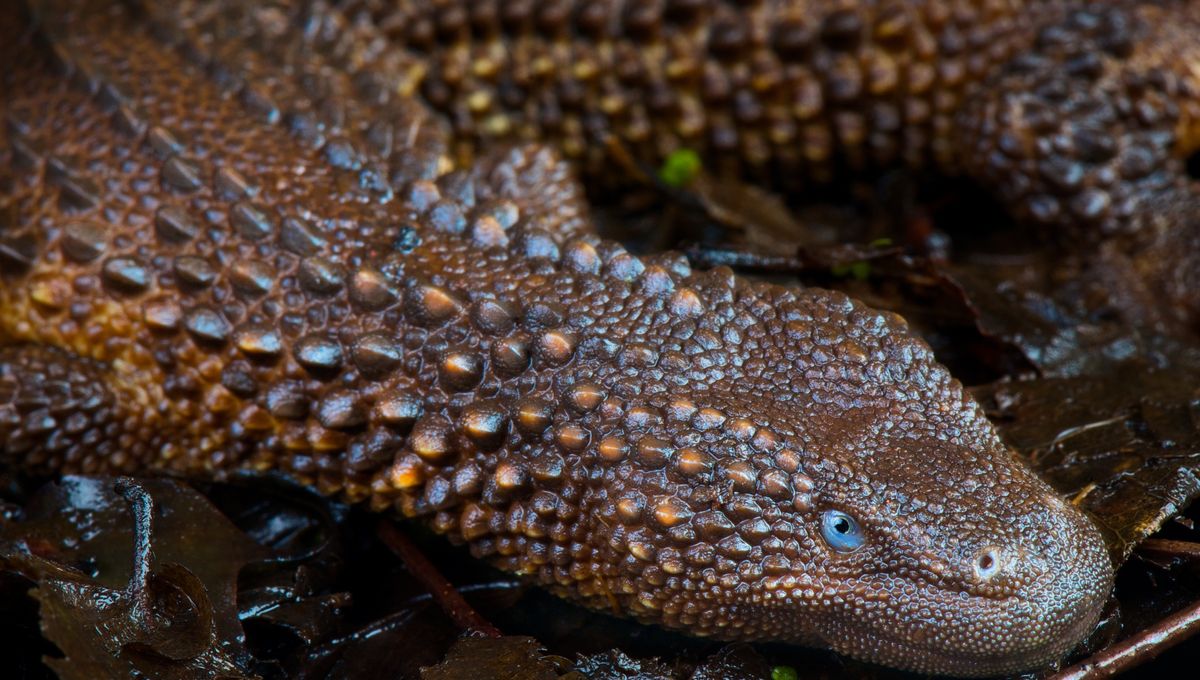
Borneo is home to all sorts of weird and wonderful plant and animal species. While some of them are famous worldwide, like the conservation symbol that is the Bornean orangutan or the lesser-known critically endangered Bornean elephant, some species are a lot more difficult to find. Meet the very shy earless monitor lizard.
The earless monitor lizard (Lanthanotus borneensis) is only found in the northwestern Sarawak region on the island of Borneo, where it is the sole living member of the Lanthanotidae family and shares its ancestry with true monitor lizards.
The lizards live a semi-aquatic nocturnal lifestyle, hunting earthworms, crabs, and catfish. In the daytime they relax in semi-torpor in burrows in the soil. They are typically thought to prefer lowland forests with access to freshwater such as streams, though reports suggest that they can inhabit rice fields.
The species is striking, looking like a prehistoric creature with incredible blue eyes; the lizards don’t actually have ear openings, but they can hear (they are also not the only earless lizard out there). They can grow to 50 centimeters long (1.6 feet). Their tails are said to have some kind of gripping ability and could hold on to branches or roots in the water to prevent them being swept away.
Between 1877 and 1961 only 12 specimens of these lizards were discovered. Classed as “endangered”, the IUCN explains that in 2004, Eric Pianka noted that “only about 100 of these lizards have ever been collected”. However, in 2014, rumors spread that around 36 live lizards were in the pet trade in Germany.
Scientists suggest that the species is relatively rare, but specimens have seemed to spring up in the pet trade across multiple different countries. The species was only discovered in 1877, but is now also threatened by both logging practices and deforestation to convert habitat to agricultural land, as well as climate change.
There is also some controversy over whether the species can be classified as venomous. The earless lizard does possess glands along its jaw that secrete a fluid containing kallikrein enzymes. However, one paper argues that this is not needed for prey capture or defense.
The mysteries of the earless lizard surround it, leading some to dub it the “holy grail” of herpetology.
Source Link: These Mysterious Monitor Lizards Don't Need Ears To Look Badass